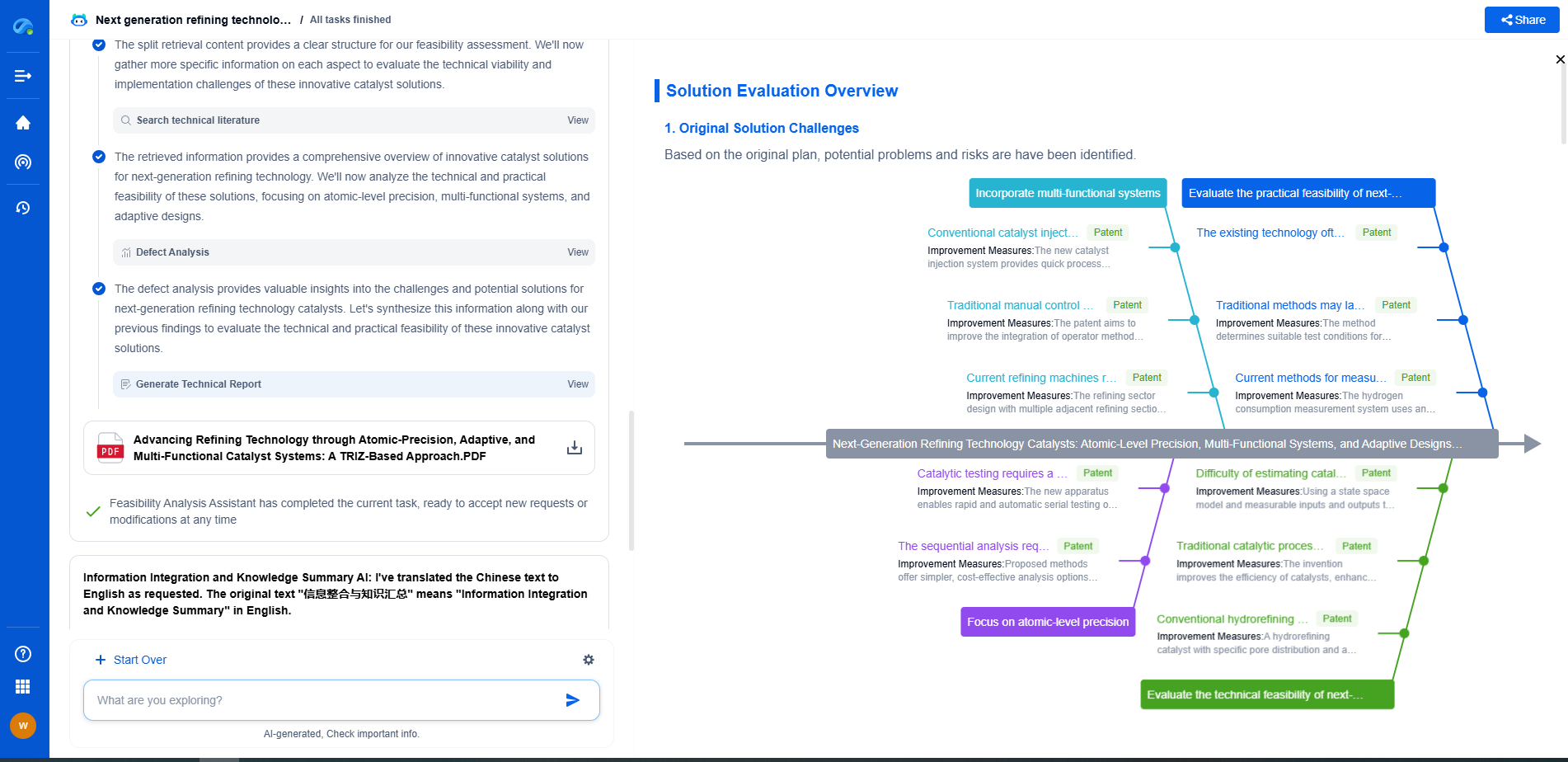What is control latency in robotic systems?
JUN 26, 2025 |
In the rapidly evolving field of robotics, one critical concept that often arises is control latency. This term might sound technical, but it fundamentally impacts the performance and efficiency of robotic systems. In this article, we will delve into what control latency is, why it matters, and how it can be managed to improve robotic system performance.
What is Control Latency?
Control latency refers to the time delay between an input being given to a robotic system and the system's response to that input. This latency can occur at various stages of the control process, from sensing the environment to processing the data and then executing a command. The speed and efficiency with which a robot responds are crucial for tasks that require precision and timely actions, such as in manufacturing, autonomous vehicles, or medical robotics.
Sources of Control Latency
Several factors contribute to control latency in robotic systems:
1. **Sensor Delays**: Sensors collect data from the robot’s environment, but there can be delays in the time it takes to receive and process this data.
2. **Communication Delays**: Transmitting data between different parts of the robotic system or between the robot and an external control unit can introduce significant latency.
3. **Processing Delays**: The algorithms processing the sensor data, making decisions, and calculating the appropriate actions can be a source of delay, especially if the computational load is high.
4. **Actuator Delays**: Once a command is issued, the mechanical components of the robot may also take time to respond to these commands, contributing to overall latency.
Implications of Control Latency
Control latency has several implications for the functionality and efficiency of robotic systems:
- **Precision and Accuracy**: High latency can lead to errors in tasks that require precise movements, as the robot may not respond quickly enough to changes in the environment.
- **Stability and Control**: Delays can affect the stability of control systems, leading to overshooting or oscillations, which can be detrimental, especially in dynamic environments.
- **User Experience**: In interactive robots, such as those used in healthcare or customer service, control latency can degrade the user experience, making interactions appear sluggish or unresponsive.
Managing Control Latency
To improve robotic system performance, managing and minimizing control latency is essential. Here are some strategies:
1. **Optimizing Algorithms**: Streamlining algorithms to reduce processing time without sacrificing accuracy can significantly decrease latency.
2. **Efficient Communication Protocols**: Using faster communication protocols or reducing the amount of data transmitted can help minimize communication delays.
3. **Hardware Improvements**: Upgrading sensors and actuators to faster models can reduce the time taken for sensing and execution.
4. **Parallel Processing**: Implementing parallel processing techniques can allow various parts of the control process to occur simultaneously, reducing overall latency.
Future Directions
As technology advances, the challenge of control latency in robotic systems will continue to evolve. Emerging technologies, such as edge computing, AI-driven optimizations, and advancements in hardware design, promise to further reduce latency and enhance the capabilities of robotic systems. Additionally, the development of new materials and energy-efficient components will contribute to more responsive and sustainable robotic solutions.
Conclusion
Control latency is a crucial factor in the design and operation of robotic systems. By understanding its sources and implications, and employing strategies to manage it, we can enhance the performance and reliability of robots across various applications. As robotics continues to integrate into more aspects of daily life, effectively addressing control latency will be key to unlocking the full potential of robotic technologies.
Ready to Redefine Your Robotics R&D Workflow?
Whether you're designing next-generation robotic arms, optimizing manipulator kinematics, or mining patent data for innovation insights, Patsnap Eureka, our cutting-edge AI assistant, is built for R&D and IP professionals in high-tech industries, is built to accelerate every step of your journey.
No more getting buried in thousands of documents or wasting time on repetitive technical analysis. Our AI Agent helps R&D and IP teams in high-tech enterprises save hundreds of hours, reduce risk of oversight, and move from concept to prototype faster than ever before.
👉 Experience how AI can revolutionize your robotics innovation cycle. Explore Patsnap Eureka today and see the difference.
- R&D
- Intellectual Property
- Life Sciences
- Materials
- Tech Scout
- Unparalleled Data Quality
- Higher Quality Content
- 60% Fewer Hallucinations
Browse by: Latest US Patents, China's latest patents, Technical Efficacy Thesaurus, Application Domain, Technology Topic, Popular Technical Reports.
© 2025 PatSnap. All rights reserved.Legal|Privacy policy|Modern Slavery Act Transparency Statement|Sitemap|About US| Contact US: help@patsnap.com

